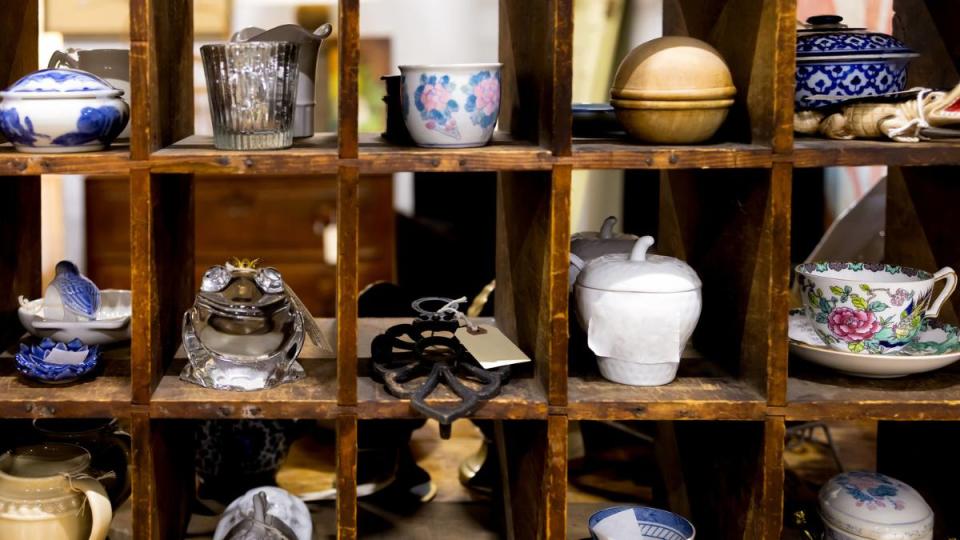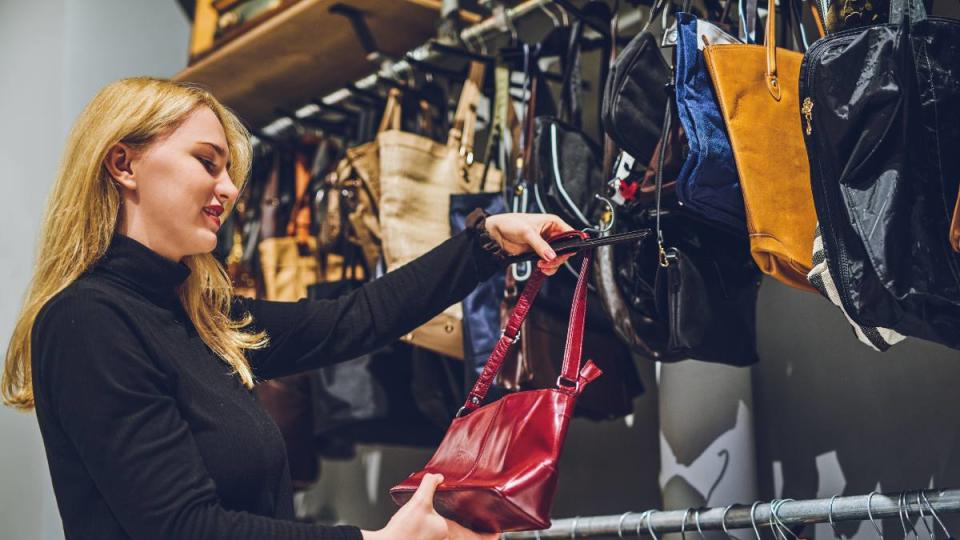Experts Reveal What to Avoid at Thrift Stores — And What Buys Are Really Worth It
Thrift stores are a great way to add a little more sustainability to your life. Plus, they let you have fun when you shop while scoring some great deals — and who doesn’t love that? After all, unless you know exactly what you’re looking for, it’s likely that your search can turn into a little treasure hunt. Maybe you’ll find a great pair of vintage jeans that fit just right or a new piece of living room decor that goes perfectly with your aesthetic. But while thrift stores can be a gold mine, they can be also be overwhelming — and not everything is actually a bargain. That's why we turned to the pros for their advice on what to avoid at thrift stores and what's a smarter buy instead. So keep reading and get ready to hit thrift-store gold!
1. What to avoid at thrift stores: Glassware
Jennifer L. Prince, owner and reseller at its FOUND vintage, has been thrifting her whole life. And while most of her closet and home decor has been bought from secondhand stores, she still steers clear of a few things. For Prince, glassware is a pass. “When my daughter was stocking her apartment for college, we headed to the thrift store to stock up on some of the kitchen and home necessities we could find secondhand, but our greatest disappointments were with the glassware,” she says.
Prince says everyday glassware tends to be overpriced at thrift stores, but that’s not the only reason she is underwhelmed. “I’ve purchased pieces and found defects I've missed while at the store. If you buy glassware — say a crystal vase — be sure to scan it visually and then carefully run your finger over the edges to feel for any chips that you may have missed with your eyes,” she adds. If you do end up buying glassware, it’s important to make sure the store has the proper packaging so your items don’t get damaged.
Buy this instead: Artisan goods

Like any other fragile items, any pottery still needs to be inspected for cracks or chips, but Prince notes they “aren't as dangerous as flawed glassware.” Pottery has a uniqueness to it as well “meaning you can find one-of-a-kind pieces like hefty mugs and serving pieces,” says Prince.
Related: Antiques Alert! Look for These 5 Vintage Items the Next Time You Go Thrift Store Shopping
2. What to avoid: Stained linens or tablecloths
You spot a beautiful bedspread but notice it has an obvious stain. If you're considering buying it and trying to get out the mark, think again. Willow Wright, owner of Urban Redeux, says it's best to steer clear of “heavily soiled items" like sheets, tablecloths or bedding that may not be easy "to have restored or professionally cleaned.” That's because, chances are, the stain is pretty set in, and trying to get it out will cost more than it's worth.
Buy this instead: Whites
Wright has one exception to the no-stain rule: For table linens and towels, she always chooses whites. “They can be bleached at home to brighten them up and sanitize. Leave stained patterned ones behind,” she says.
Related: From Clutter To Cash: Here’s How To Make Money Off of Old Clothes, Jewelry, and Books
3. What to avoid at thrift stores: Jewelry
“Skip buying jewelry at thrift stores as most of it is likely going to be costume jewelry and could be overpriced,” explains Julie Ramhold, consumer analyst with DealNews.com. These places may have unique jewelry, so if something speaks to you, go for it, but she says to keep in mind that it might not be anything authentic.
Buy this instead: Handbags

Ramhold says you’ll get more bang for your buck with handbags. Her advice: “Be sure to check the lining for tears and stains as well as the outside to make sure it's in decent shape. Some may be worse for wear; however, most times you can find a cute new purse for minimal cost."
Related: How to Clean a Leather Purse So It Looks Brand-New — No Pricey Products Required!
4. What to avoid: DIY items
If you’re not super handy or prepared to fix the items you’re looking at, then it’s probably best to leave them behind. “I’ve purchased pieces of clothing that I've promised myself I would fix," says Prince. "Sometimes, stains don't come out, or I don't get around to sewing on buttons or reattaching hemlines for a while." The same goes for electronics that need to be rewired or bigger projects that require more attention.
Buy this instead: Packaged items
Rather than spending money on something that takes up more of your time to repair, Prince suggests prioritizing items that are still in their original packaging. “If you find goods in their boxes or shrink-wrap, there's a good chance they are still in perfect condition,” Prince says.
For more ways to be savvy, click through the links below!
“I’m a Registered Dietitian: Here’s What I Buy at Trader Joe’s — And What to Steer Clear Of”
Shopping At Walmart? Use These 8 Hacks To Shave More $ Off Your Receipt
How to Untangle a Necklace in 2 Easy Steps + the Binder Clip Hack to Keep Jewelry Tangle-Free

